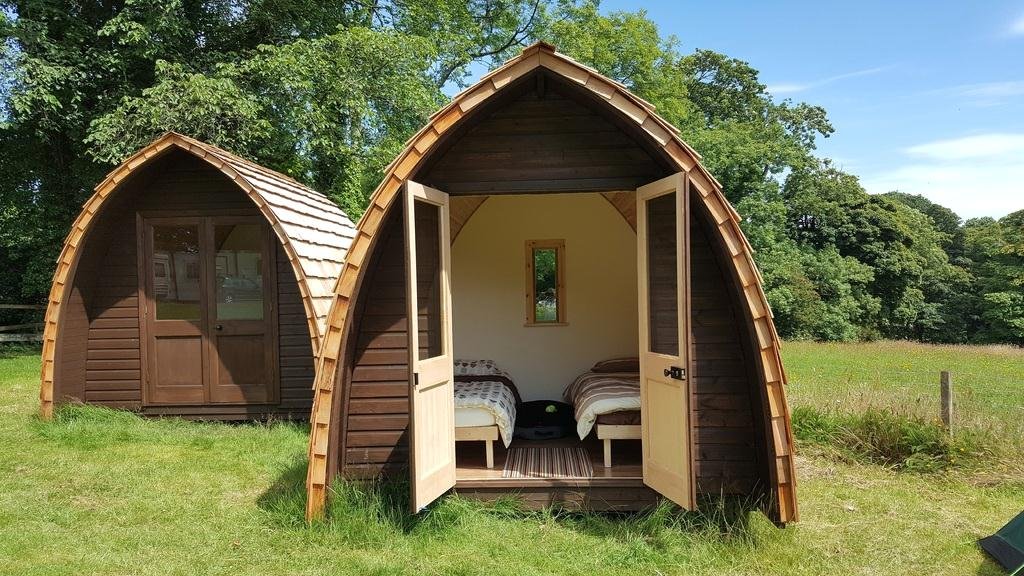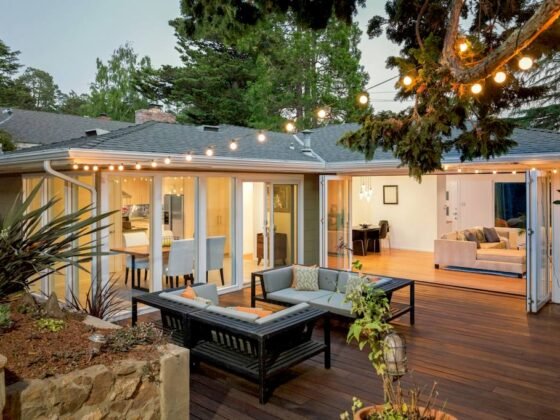Table of Contents Show
Log cabins have been capturing people’s imaginations for hundreds of years. The look and feel of these buildings invite homeowners to embrace a peaceful, quiet state of mind.
In today’s world, where everyone is in a constant hurry, everything that these beautiful abodes stand for is more important than ever. Whether you decide to have one built in your garden or outside the city, you’re bound to enjoy its tranquil ambiance.

Buying a log cabin isn’t a small investment, so it’s essential to get it right. Here are the most important things you need to know before making the purchase:
Why Buy a Log Cabin?
Log cabins are a fantastic addition to any kind of outdoor space. It’s a great way to make your garden more exciting. There, you’ll be able to use it for entertainment, leisure, or even work.
Log cabins are ideal as outdoor living rooms, home offices, gyms, bars, workshops, game rooms, meditation retreats, garden saunas, garages, garden storage boxes, and snooker rooms.
They are ideal for giving a teen their own space that’s not far away from home. You can even operate a business in a log cabin. No matter what you decide to use it for, you’ll be adding value to your property with the cabin’s practicality and attractive design.
What are Log Cabins Made From?
As their name suggests, these buildings are manufactured from timber logs. With all cabins of this type, the most crucial component is the timber itself. Both the longevity and the appearance of a log cabin are impacted by the quality of the wood.
Most experts agree that the best timber for such buildings is slow-grown. This type of wood is less prone to splits and warping and sports greater density and increased durability.
Most log cabins are constructed from interlocking logs. When joined, these create a very solid structure, and no gaps are visible. This kind of tight fit makes the cabin resistant to wind penetration and dampness.
If you’re planning to use your log cabin year-round, go for thicker logs. This is particularly important if you live in a colder climate.
Read Also:
The Styles are Endless
These buildings are as unique as the individuals who buy them. Different materials, different log anchoring, different corner constructions – all these factors can drastically change the appearance of a log cabin.
Homeowners are typically able to choose between milled logs and sawn logs. The appearance and size of milled logs are regulated, as they’re sent through a mold. Sawn logs, on the other hand, maintain their uniqueness.
One of the primary appeals of these buildings is that both their exteriors and interiors are made up of logs. However, modern takes typically involve lots of different materials. Whether you want a simple drywall interior or a grand brick-made entryway, it can be done – the styles are endless.
What About Energy Efficiency?
When compared to concrete structures, these buildings are far more efficient when it comes to energy utilization.
The key is in the wooden logs used for their construction. This type of material is a good insulator by nature and successfully prevents heat from escaping. Maintaining a stable internal temperature is easy, regardless of outdoor conditions.
A well-constructed log cabin can reduce energy costs by up to 30%. What’s more, it also reduces the carbon footprint by releasing a smaller volume of pollutants into the atmosphere.
The Maintenance of a Log Cabin
The question of how difficult it is to maintain a log cabin is a valid concern. However, most people fail to realize that keeping this kind of building in order is very straightforward.
As long as it is well-maintained, timber is a very durable material. One of the most important things to keep in mind is that you shouldn’t paint it.
Paint can seal the surface of the wood and prevent the moisture from getting out. Treat your cabin’s external surface with adequate stains. It will prevent the rain from getting inside the wood, but it will still allow it to breathe.
A great thing about log cabins is that they’re very communicative. For example, a line of wood rot indicates that you probably have an incorrectly installed gutter. Small holes, on the other hand, indicate the presence of carpenter ants.
As long as you’re listening, these issues won’t get out of hand and become something that can’t be easily fixed.
What Size of a Log Cabin Should I Go For?
Typically, most garden log cabins sport sizes of between 2 square meters to 8 x 5 meters. Therefore, no matter what size you go for, the cabin is going to be a notable feature in your garden.
Consider how much actual space you’ve got to play with. Make some room for other things you enjoy – you don’t want the cabin to completely dominate the garden.
If you’re planning to use it as a home office, on the other hand, consider if there’s going to be enough room for office furniture and your computer equipment. Take a tape measure and plan meticulously.
Planning Permission – an Important Consideration
The laws concerning planning permissions vary from one country to another.
In Ireland, for example, structures no larger than 25 square meters and no higher than 3.9 meters don’t require planning permission.
To be sure, the best thing you can do is to check with your local council.
Do I Need to Prepare My Garden for a Log Cabin?
Prior to the installation, it’s important to have an adequately prepared base. The base’s quality can have a huge impact on the cabin’s longevity. And, as it can be difficult to make changes later, getting it right the first time is paramount.
The base needs to be flat, even, and made from durable material. The only way to build an accurate base is by finding the exact dimensions on the website of the cabin’s manufacturer.
Furthermore, try to build the base close to an existing path. You could easily damage the grass by repeatedly walking to and from your brand new log cabin.
Before you embark on the journey of finding the best log cabin for your needs, consider the factors mentioned above. They should help you make a more informed decision.
Author Bio:
Kevin has gone through an extensive home renovation with his son, which he has both thoroughly enjoyed, and dreaded every morning. He is now the proud owner of half his dream house (the other half has been waiting for spring). You can read more of Kevin’s work on PlainHelp.









